How to protect grapes from birds?

The need to learn how to protect grapes from birds, how to protect them by scaring away and other methods, arises for every amateur vine grower. Not all winged guests peck the berries completely, but they cause significant damage to the crop, damage the skin, attracting wasps and other pests. When figuring out how to set up protection against sparrows and starlings, you can make your own isolation if they peck grapes, as well as use various means to keep birds away from ripening bunches.
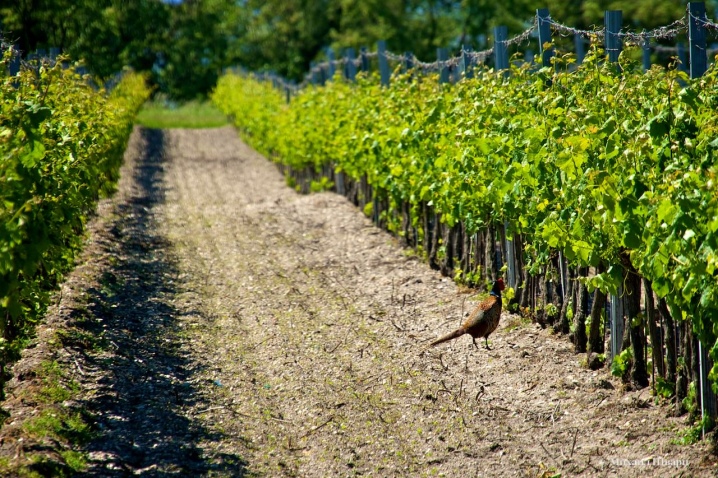
What birds eat berries?
Not all of the vineyard's winged guests like berries. That is why, when organizing protection, you have to pay attention to the classification of birds. The taste preferences of birds also vary. Jackdaws are real gourmets who prefer white and dark nutmeg varieties. They are especially dangerous due to the fact that they prefer to move in packs, while differing in excellent appetite.
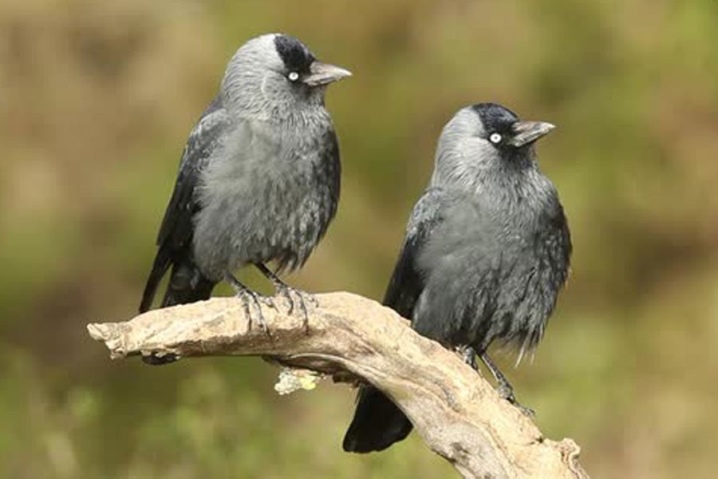
Tits and sparrows do not peck the berries completely, but damage them by drinking some of the juice. They cause particular dissatisfaction with dowsers because they begin to spoil the bunches long before full maturity. Dark grapes can attract starlings or orioles, whites like magpies and crows. Thrushes are omnivorous, eat ripe berries whole, a flock can destroy a large harvest in a few days.
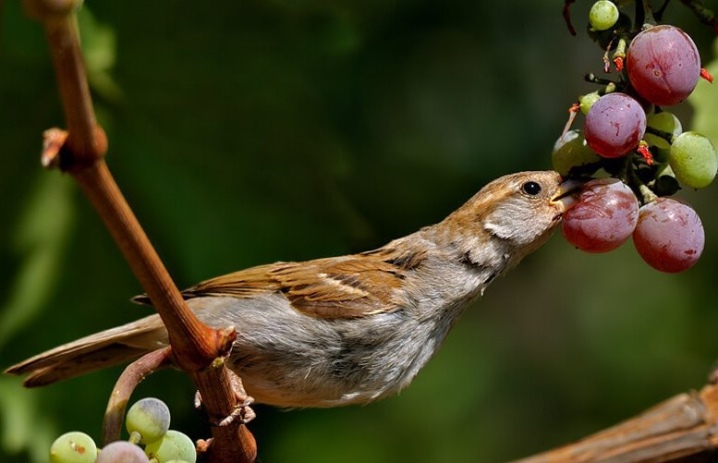
How to scare away?
The easiest way to help protect grapes from birds during the period when they are actively pecking berries is to install deterrents or devices. They work autonomously, which means that the summer resident himself practically does not have to do anything.
A sound scarer will help to protect the landings from the visits of uninvited guests, broadcasting the cries of birds of prey on a timer.
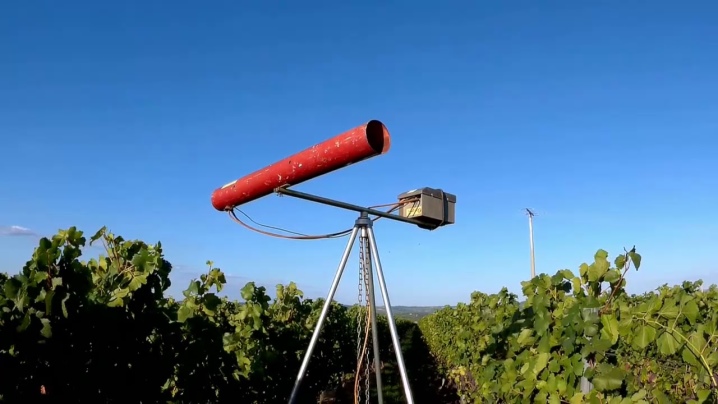
But there are other options as well.
- Mirror CD... The sparkle scares the birds, but if you do not change the location, they will soon get used to it.
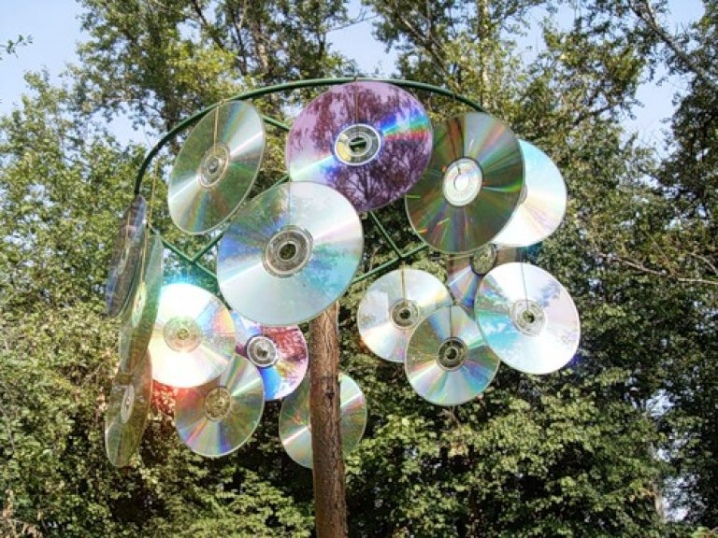
- Garbage bags in bright blue. They are cut so that the edges sway in the wind, making a noise. The blue color scares the birds, and the sounds add an extra effect.
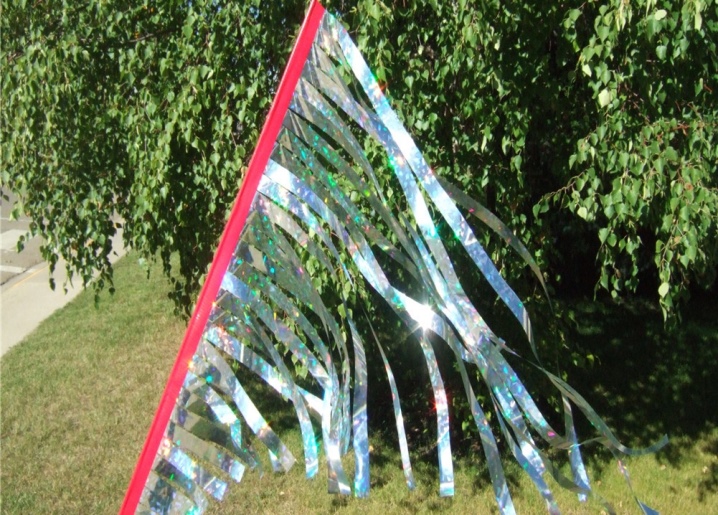
- Kites in the form of birds of prey. They should float over the landings. This method works well in combination with sound scare away.

- Balloons made of durable material. Better to take options for blue, orange, black or white. Large eyes are drawn on their surface in a circle. Agronomists have calculated that the optimal distance between them should be equal to an angle of 72 degrees.
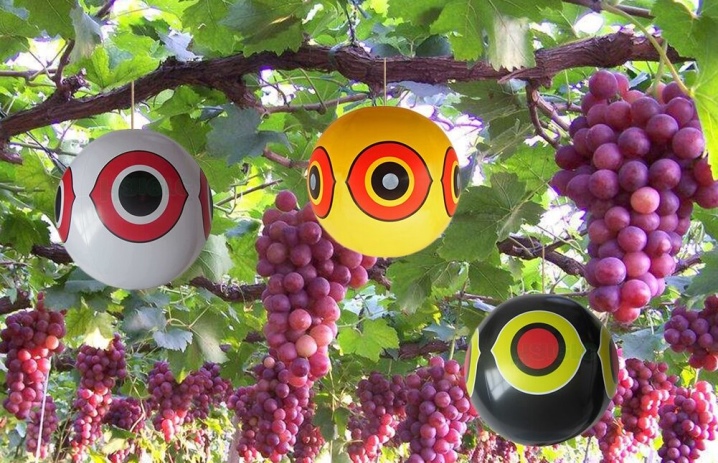
- Magnetic tape from old cassettes or reels. Many summer residents still have them in stock. The only problem is that this method does not work on all feathered guests. Starlings are afraid of such noise, but jackdaws and magpies are not.

- Combined disc and plastic bottle system. The neck of the container is threaded through the hole in the center of the CD. The edges of the bottle are cut in stripes, creating blades that rustle in the wind. This design will definitely alert even the most careless birds.
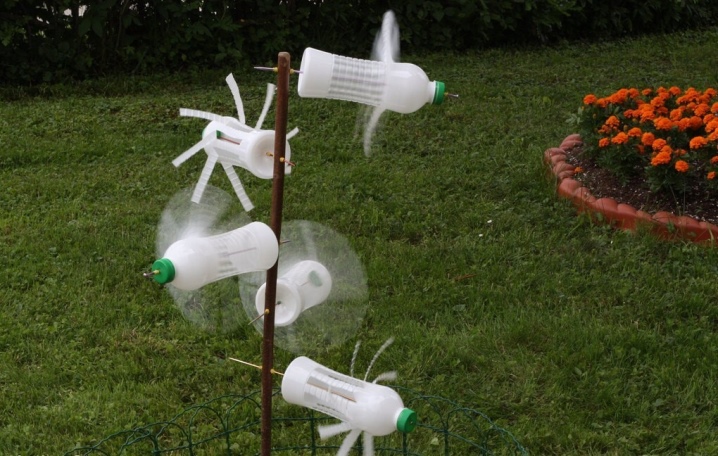
- Garden scarecrow... You can make it with a body and head out of blue plastic bags, increasing the effect. It is important to periodically move the "guard" across the territory, otherwise they will soon cease to be afraid of him.
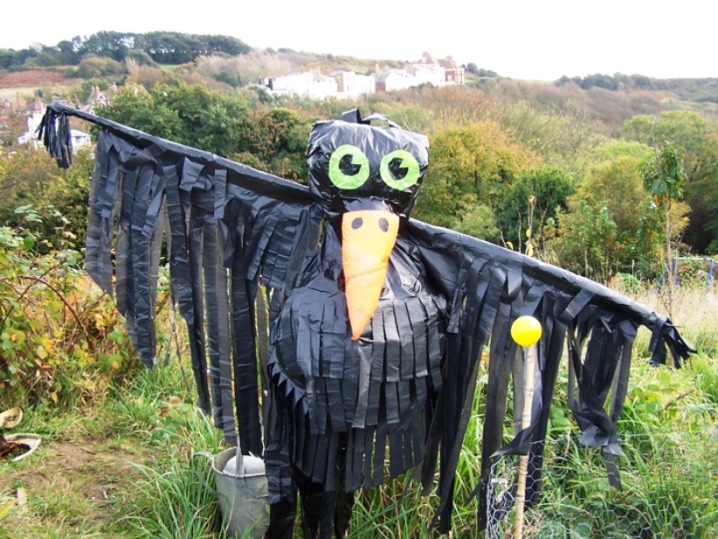
Birds begin to do the main harm to ripening berries in the second half of summer, from mid-or late July. Gluttonous guests visit the vineyard twice a day - in the mornings and evenings. Accordingly, the selected deterrent should be clearly visible at any time of the day.Also, special vigilance will have to be exercised during periods when chicks are hatched in nature. They fall in June and August - the younger generation attacks bunches especially actively.
You don't always need to scare away birds. If the crop is attacked by sparrows, tits, wagtails, the problem is often solved with the help of drinking bowls with water placed in the garden.
The fact is that feathered guests damage the berries, trying to get the required amount of moisture. If you quench their thirst in a different way, you won't need to invent complex defenses.
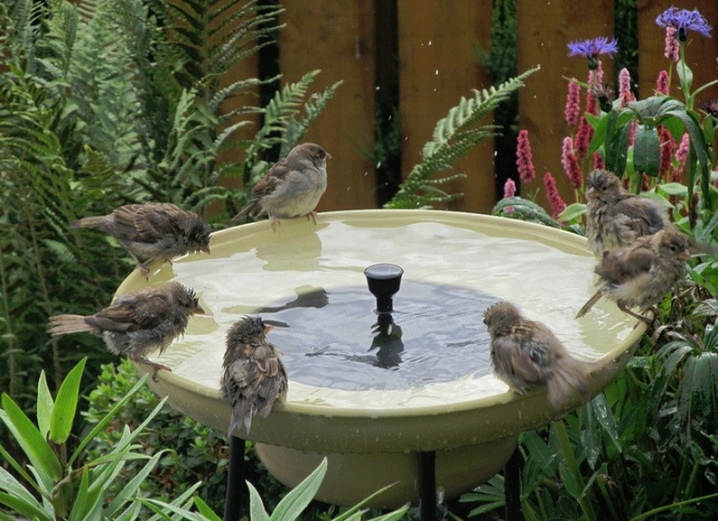
Insulation
Wanting to save ripening clusters from sparrows, tits, blackbirds or jackdaws, many summer residents use comprehensive protection.
- Most often, stockings are used, inside which clusters are placed. A large plantation can be entangled with camouflage or fishing nets with small meshes. But birds often get entangled in such fences, may die or require rescue. When choosing a means of isolation, it is important to find a compromise between light transmission and the size of the cells - too large will leave loopholes for birds.
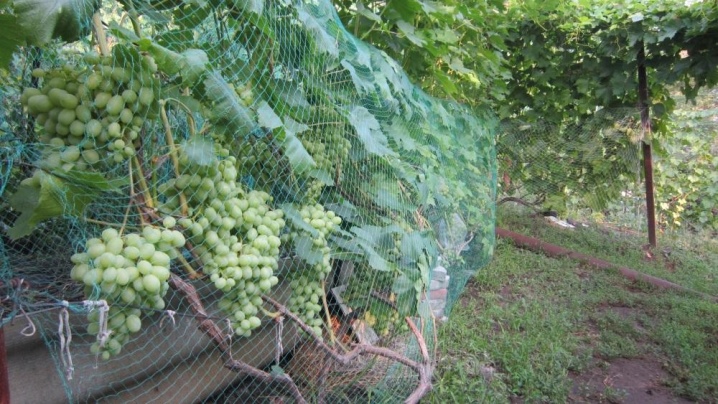
- Small plantings require different measures... 1-2 vines can be protected with individual mesh bags available from specialist stores. If you can't buy them, you can use vegetable nets, inside which ripening brushes are placed. Some summer residents independently sew protective covers from ordinary window mesh.
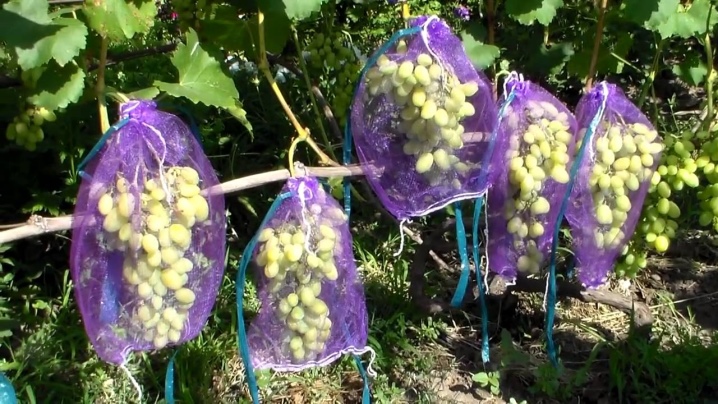
- The Japanese isolation method is also noteworthy. Here fruit clusters are covered with miniature dome-caps. They block the view from the air, making ripening berries invisible to pests. You can make a similar shelter yourself by fixing a disposable plastic plate in the form of a cone. You can cope using the most common stapler.
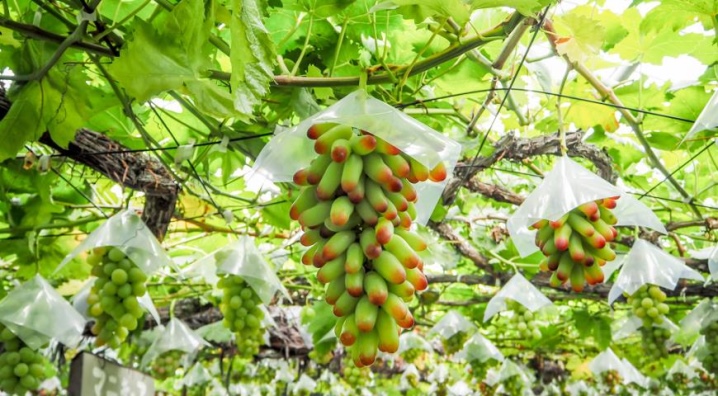
- An equally popular solution is special ready-made agromaterials that provide additional UV protection for leaves and berries.... Mesh fabrics are well ventilated, allow air to pass through, and provide additional protection against insect pests. Under such shelter, the vines can be easily cared for.
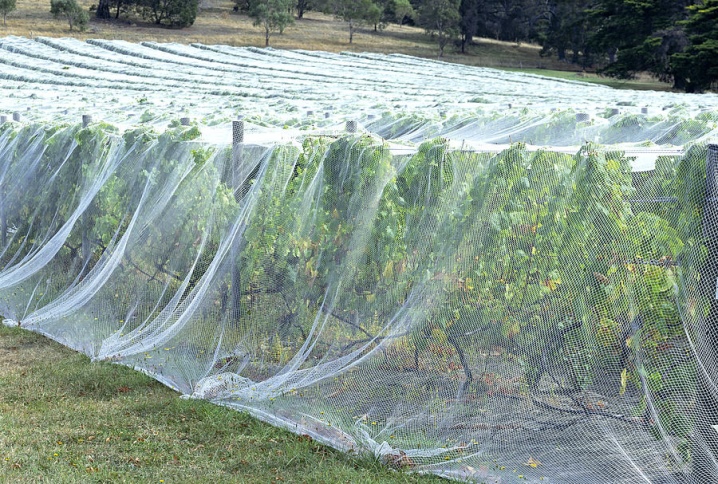













The comment was sent successfully.